Shameless, heartless and utterly engrossing talk TV
The Jerry Springer Show was tacky at best, tawdry at worst ... but there was a liberatory streak.
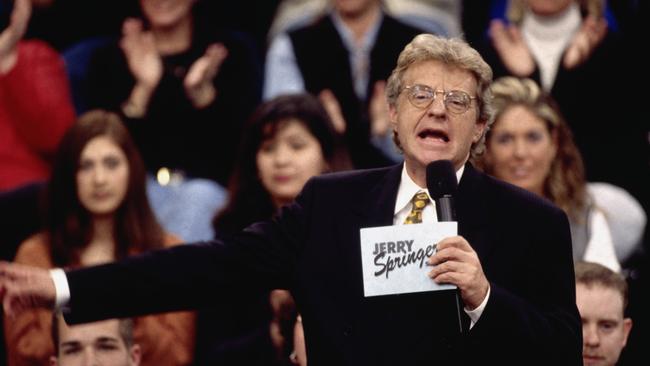
“It just felt so raw and visceral and shameless in the way that it was being packaged – that did kind of shock me,” Luke Sewell says. He’s talking of his Netflix documentary Jerry Springer: Fights, Camera, Action and the first time he saw Springer’s show.
He describes it as a “kind of Roman Colosseum – pure shock, pure spectacle, pure confrontation. And for it to have such success clearly opened the doors to reality TV, and I guess some of the things in the world today.” (As the host himself admits in an interview, “I don’t do a talk show, I do a circus”.)
I’ve just caught up with this two-part documentary from Minnow Films — the same company behind Netflix’s Ashley Madison: Sex, Lies and Scandal. That documentary series was a viral hit, knocking Baby Reindeer out of its No.1 spot, and creating enormous discussion among the millions who have watched it so far.
It’s the true crime documentary about the now legendary hacking of the online dating site for adulterers in 2015, in which private information was stolen by still unknown vigilantes and used to humiliate, shame and morally castigate people who were assured their information was protected.
Jerry Springer: Fights, Camera, Action is another entertaining example of Netflix’s new wave of prestige documentary filmmaking – “agony as entertainment”, some critics call it – exploring the genesis and sometimes tragic consequences of the show that made Jerry Springer a household name.
Luke Sewell previously directed Trust No One: The Hunt For The Crypto King for Netflix, and his new show, a two-parter, features first-hand testimony and revelations from the long-running show’s insiders.
The documentary is immersive, edited at high speed, and is horribly irresistible. It’s impossible to stop watching, never knowing just what is coming next, just like the show whose history it documents. It especially relies on interviews with several producers, whose recollections evoke warm nostalgia but little embarrassment about the unscrupulous way that the show’s guests were treated.
(One producer, Toby Yoshimura, talks of the importance of “reaching into the brain” of the contestants off camera, rousing them up, tapping into “the thing that would make them cry, or fight or scream”. And he later admits, “We were playing with people’s psyches until we got a result.”)
A chronology is provided by the rather earnest Chicago media writer Robert Feder, who also acts as a kind of narrator and host, filling in the blanks and providing potted background material and biographies of the key participants.
Feder was the television and radio columnist for the Chicago Sun-Times from 1980 until 2008 and has been an influential blogger since, a specialist in what he calls “the inner workings of the media”.
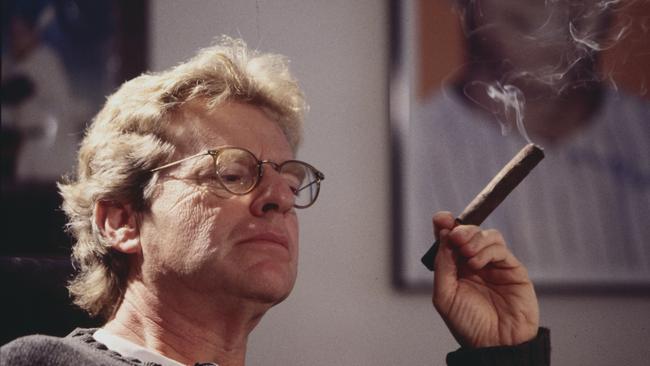
Springer himself is not interviewed – he died in April 2023 – but there are many grabs of his comments about the show to media outlets. A former progressive lawyer, he entered local politics becoming mayor of Cincinnati. Then a news commentator, and eventually he became a local, and unremarkable, talk show host.
“There was nothing about Jerry or the show that stood out among the literally dozens of talk shows that were flooding the market at that time,” says Feder.
And then Richard Dominick came along, the executive producer of the show from 1994 to 2008, taking the mostly-anodyne, Donahue-style talk program and turning it into the anarchic festival of folly.
Dominick had worked in a number of odd jobs and freelance roles prior to his time on the Jerry Springer show, notable as a writer producing wild headlines for tabloid newspapers. (“Toaster Possessed by the Devil” was one of his more restrained efforts).
Then, in 1991, he was hired to work on the Jerry Springer show as a producer, before he was promoted to the role of executive producer just two years later. “The vision I had was let’s take a talk show and turn it upside down to make it wild,” the saturnine, cigar-chomping Dominick says in the film. “Let’s make it sexy.”
As Sewell dramatises, the show became a deliberately confected visual tabloid under Dominick. There were segments like “I Slept with 251 Men in 10 Hours!”; “I Live in a Box”; “Angry Women Attack”; “You Slept With My Stripper Sister”; and “Attack of the KKK Dad.”
He and Springer agreed from the start that their show should be “interesting with the sound off”. It became a mirror to the people who watched it so addictively and if that reflection was often cruel, it was also funny, outrageous and affecting as much as it was downright disturbing.
The show folded in elements that would be common in reality TV – gimmicks like DNA reveals, cat fights, chair-throwing confrontations, and various kinds of exposes. Strippers dipped themselves in chocolate and burly bouncers wrestled Klansmen into submission, and a man professed his love for a horse in an infamous segment titled “I Married a Horse”. (In the documentary, producer Melinda Chait Mele notes with some satisfaction that while the episode was banned, the fact that it was reported in every major newspaper meant the story was “the train wreck you can’t rip your eyes off of”.)
The show embraced shameless silliness – though Springer liked to tell his audience that if there was no “outrageousness” how “boring” life would be. In a clip in Sewell’s documentary, he explains to a TV interviewer, “In a free society the media should reflect all elements of that society, not just the mainstream. In America, what is it – I may hate what you say but I will fight to the death for your right to say it. We really believe that.”
But there’s the sense that Jerry was just being disingenuous, always distancing himself from the frenetic action, even as the audience yelled, “Jerreeeee. Jereeeee”, observing it all with a disconnected rationality. He was seemingly intellectually removed from it all, while the “bozos, bimbos and brawls”, as the press called it, became “the hottest show in television”. (Mind you, he once entered the stage by sliding down a stripper’s pole.)
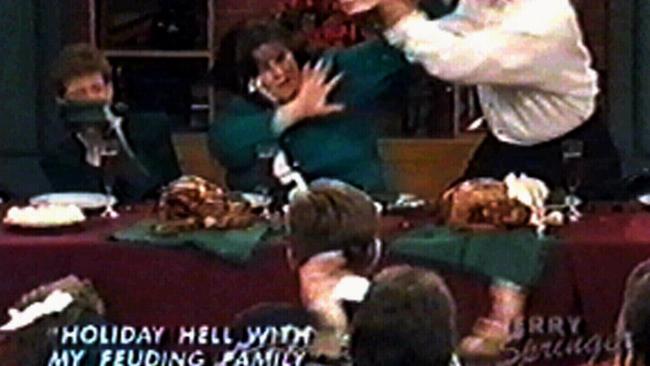
Fights, Camera, Action largely features extraordinary footage of the crazy performances and often orgiastic involvement of audiences whipped up into a frenzy by callous floor managers. And there’s fascinating backstage footage, too, of the shenanigans involved in the preparing of the contestants.
As Feder says, “It became a talk show where there was very little talking. It was about the yelling, the fighting; it was as primal as the Christians and the lions, the crowd yelling for blood.”
It was tacky at best, tawdry at worst but there was a liberatory streak. As critic Susan Nussbaum says in her brilliant Cue the Sun, The Invention of Reality TV, “At night viewers watched tycoons cavort on shows like Dynasty and Robin Leach’s Lifestyles of the Rich and Famous. In the afternoon, the rest of the world was invited to the party.”
As she points out, shows like Jerry Springer’s featured teen mums and drag queens, trailer trash and the ghetto fabulous – guests from every racial and sexual background, all the categories that mainstream culture viewed as marginal. There were the mentally ill, disabled people, fat people, transsexual people, sex workers, and addicts. There was frank talk about rape, domestic abuse, incest, infidelity, paternity scandals, and anorexia – the kind of topics nightly news casts disdainfully referred to as “women’s stories”.
In its weird way Jerry Springer was educational as well as exploitative.
Those colourful stories got people seen and heard and at the same time interrogated by nosy viewers. As Nussbaum says: “That was the bargain TV had always struck, the price for being visible.”
It was one of the shows that led to the mushrooming of reality programs too as the internet took over our lives, offering something seemingly authentic hidden in something fake. A direct line can be traced from the Springer show to the manufactured mayhem of reality TV, which exploded following Big Brother and Survivor in 2000, and continues today with shows like Married At First Sight and Australia’s Cheapest Weddings.
As Nussbaum suggests of these kinds of shows, for all their lowbrow status they offer up “a powerful glimpse of human vulnerability, breaking taboos about what you were allowed to say and hear”. But, as Sewell’s series shows, Jerry Springer was a hard act to follow.
Jerry Springer: Fights, Camera, Action streaming on Netflix



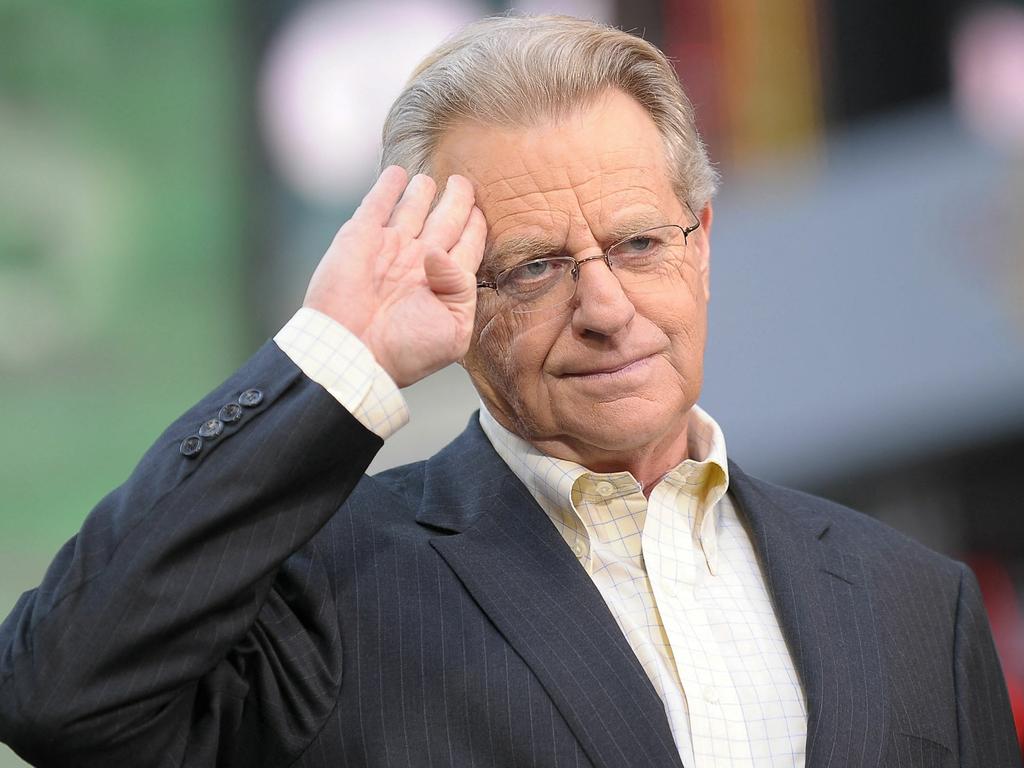


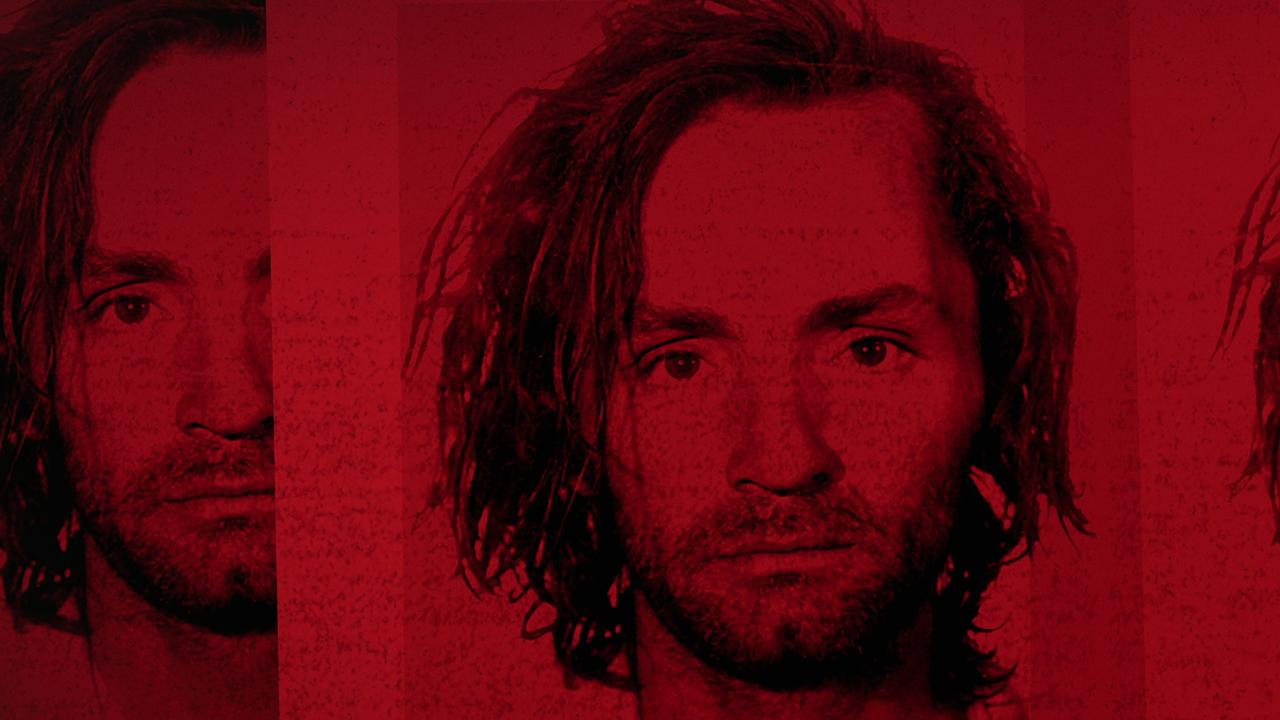
To join the conversation, please log in. Don't have an account? Register
Join the conversation, you are commenting as Logout